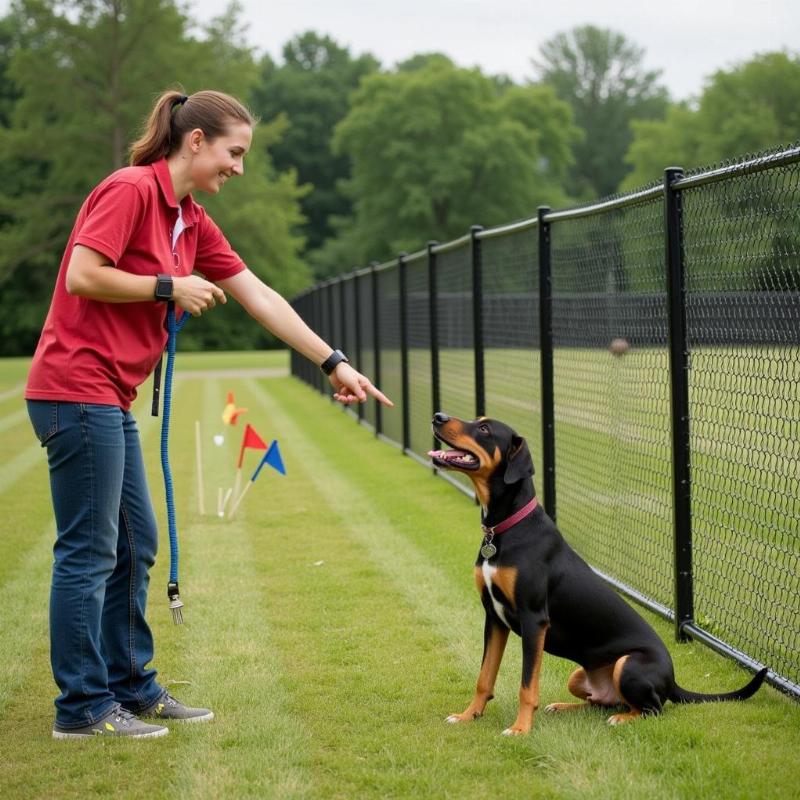Boundary shock collars, also known as invisible fences or electronic fences, are a popular choice for pet owners in the US seeking to contain their dogs within a designated area without the need for a physical fence. These collars use radio signals to create a virtual boundary, and when a dog approaches the edge, they receive a warning beep followed by a static correction if they continue further. This system allows dogs to enjoy a greater degree of freedom while staying safely within the confines of their property. However, choosing and using a boundary shock collar requires careful consideration and training to ensure its effectiveness and your dog’s well-being.
Understanding Boundary Shock Collars: How They Work and Their Benefits
Boundary shock collars work by establishing a perimeter using a transmitter that sends radio signals to a receiver collar worn by your dog. A buried wire or a series of flags marks the boundary. As your dog approaches the edge, the collar emits a warning beep. If the dog continues past the boundary, the collar delivers a mild static correction. The intensity of the correction can usually be adjusted to suit your dog’s temperament and size.
One of the key benefits of using boundary shock collars is the freedom they provide for both you and your dog. No physical fence means an unobstructed view of your landscape and a more natural environment for your dog. These collars can be particularly useful for properties where traditional fencing is prohibited or impractical. They also offer a more affordable solution compared to installing a physical fence, especially for larger properties.
Choosing the Right Boundary Shock Collar for Your Dog
Selecting the right boundary shock collar depends on several factors, including your dog’s size, temperament, and the size of your property. For smaller dogs, you’ll need a collar with lower correction levels. For larger, more stubborn breeds, a collar with higher correction levels might be necessary. Consider the terrain of your property as well. Some systems are better suited for hilly terrain or properties with trees and obstacles.
When choosing a collar, look for features like adjustable correction levels, waterproof design, and a long battery life. A reputable brand with positive customer reviews is also a good indicator of quality and reliability.
Training Your Dog with a Boundary Shock Collar: A Step-by-Step Guide
Proper training is crucial for the successful use of a boundary shock collar. Start by introducing your dog to the collar gradually. Let them wear it for short periods without activating the correction. Next, begin training within the boundary using flags. As your dog approaches a flag, issue a verbal warning. If they cross the flag line, the collar will deliver the correction.  Dog Training with Flags for Boundary Shock Collar Repeat this process consistently, reinforcing positive behavior with praise and treats. Over time, your dog will learn to associate the warning beep with the boundary and avoid crossing it.
Dog Training with Flags for Boundary Shock Collar Repeat this process consistently, reinforcing positive behavior with praise and treats. Over time, your dog will learn to associate the warning beep with the boundary and avoid crossing it.
Common Concerns and Misconceptions about Boundary Shock Collars
Some pet owners are hesitant to use boundary shock collars due to concerns about their safety and effectiveness. “Are they humane?” is a frequently asked question. While the static correction is unpleasant, it’s not harmful. It’s important to remember that the goal is to teach avoidance, not to punish. Another concern is the possibility of a dog running through the boundary in a moment of excitement. While this can happen, consistent training and proper collar fitting can minimize the risk.
“Dr. Emily Carter, a certified veterinary behaviorist, emphasizes the importance of proper training. ‘Boundary shock collars are a valuable tool when used correctly. Training is key to ensuring their effectiveness and your dog’s well-being.’”
Conclusion: Making an Informed Decision about Boundary Shock Collars
Boundary shock collars can be an effective and convenient solution for containing your dog, but choosing and using one requires careful consideration. By understanding how they work, selecting the right collar, and implementing proper training techniques, you can ensure both your dog’s safety and freedom within a designated area.
FAQ:
- Are boundary shock collars safe for my dog? Yes, when used correctly, boundary shock collars are safe. The static correction is unpleasant but not harmful.
- How long does it take to train a dog with a boundary shock collar? Training time varies, but most dogs learn within a few weeks with consistent training.
- What if my dog runs through the boundary? While it can happen, proper training and collar fitting minimize the risk.
- Can I use a boundary shock collar for multiple dogs? Yes, you can purchase additional collars that are compatible with the same transmitter.
- What happens if the power goes out? Most systems have backup batteries, but it’s important to have a backup plan in case of extended outages.
- Are boundary shock collars effective for all dogs? While generally effective, some dogs may be more resistant to training.
- Do boundary shock collars work for all terrains? Some systems are better suited for certain terrains. Consult the manufacturer’s recommendations.
Beautdogs.us: Your Trusted Source for Dog Care Information
Beautdogs.us is your one-stop resource for all things dog-related in the US. We provide expert advice, breed-specific information, and product recommendations to help you care for your canine companion. Whether you’re a new dog owner or a seasoned pro, Beautdogs.us is here to help. Contact us today via email at [email protected] or call us at +1 501-555-7529.